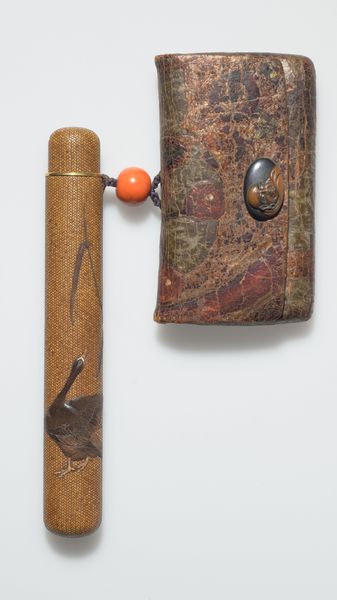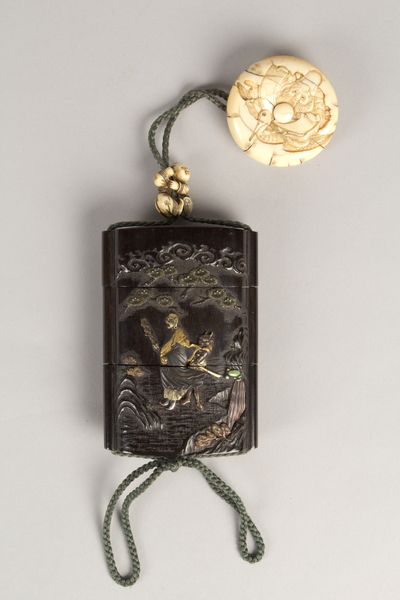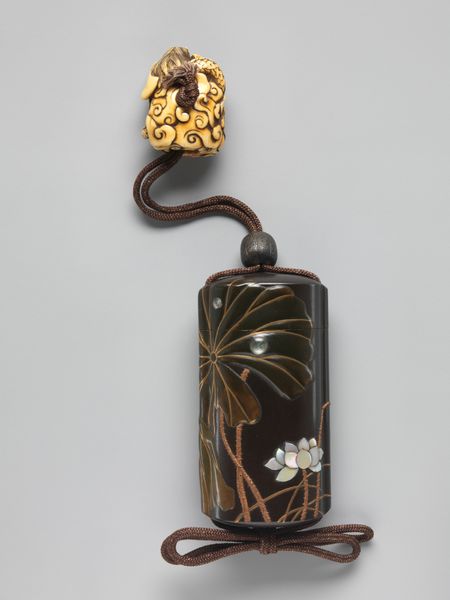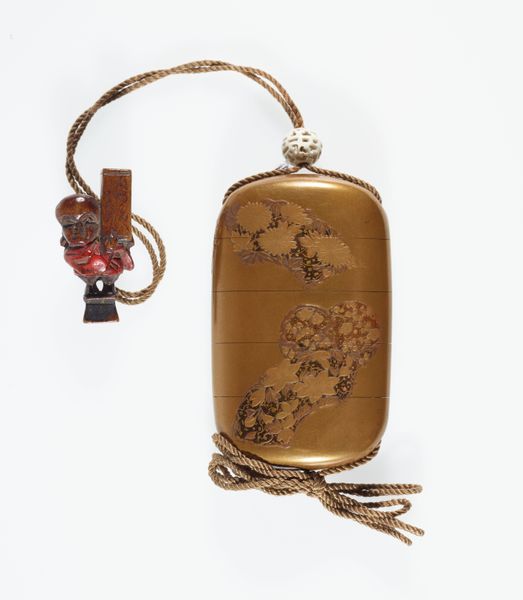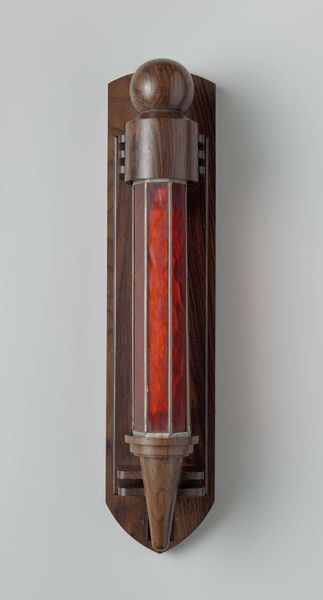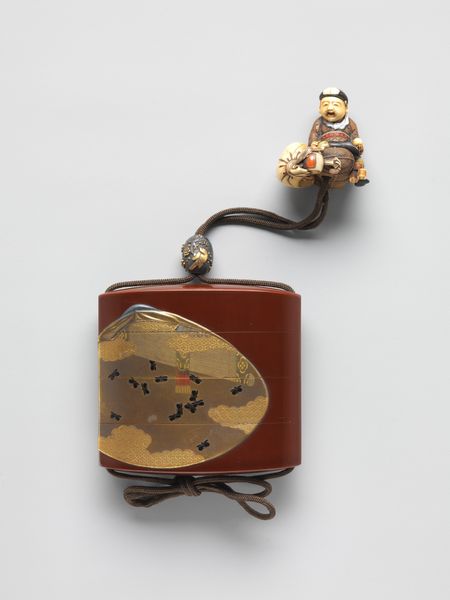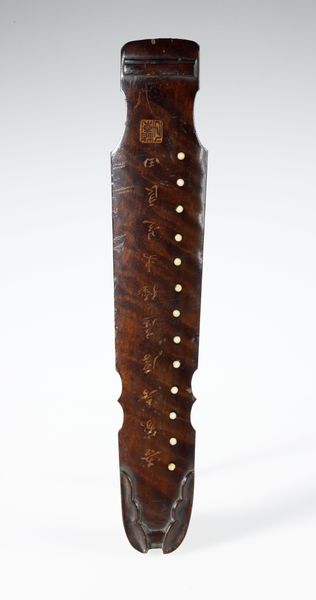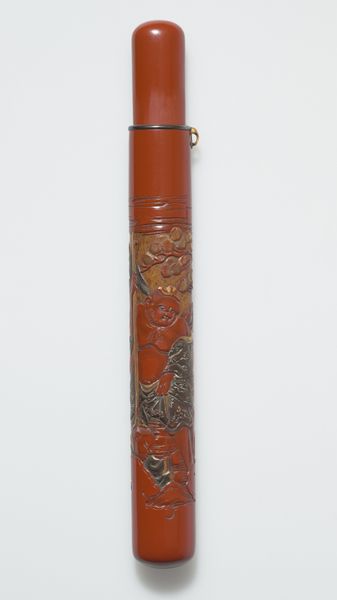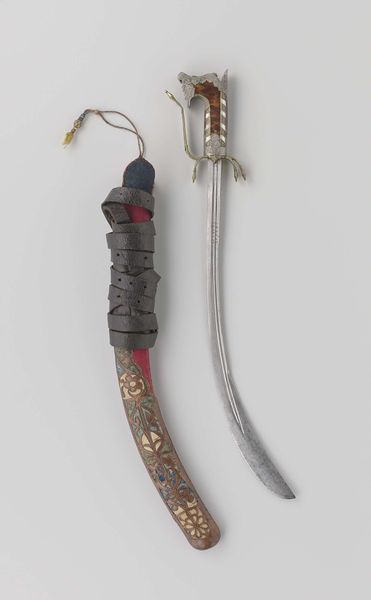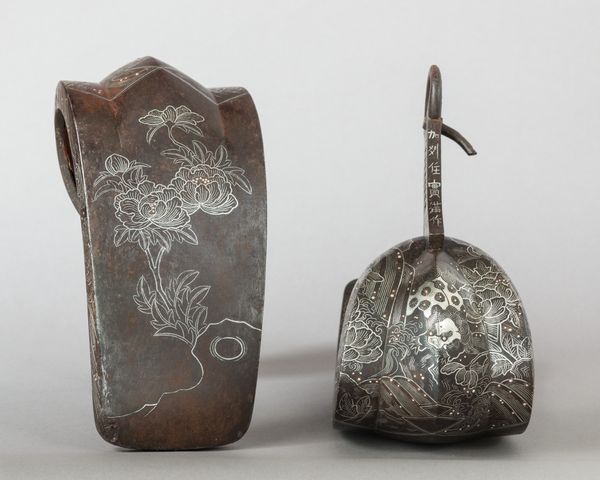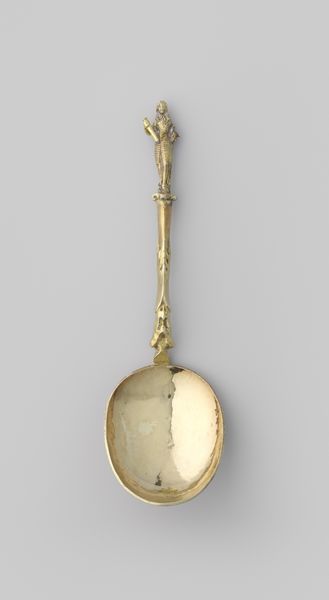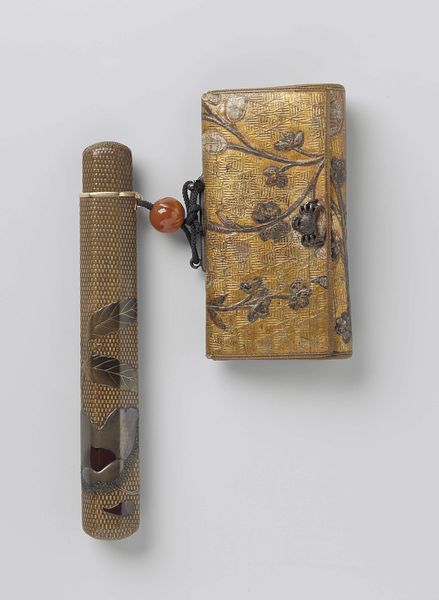
carving, relief, ceramic, wood, ivory
#
carving
#
asian-art
#
relief
#
ceramic
#
ukiyo-e
#
japan
#
ceramic
#
wood
#
decorative-art
#
ivory
#
miniature
Dimensions: 4 9/16 x 1 9/16 x 3/4 in. (11.6 x 3.9 x 1.9 cm)
Copyright: Public Domain
This is an Inrō imitating an Old Chinese Ink Cake, made in Japan by Kanō Jukkyoku. Inrō were traditionally cases for holding small objects, often suspended from the obi, or sash, in place of pockets. This one is unusual for its imitation of a Chinese ink cake, used for calligraphy and painting. Ink cakes were highly prized objects, often collected and displayed. This Inrō then reflects the Edo period interest in Chinese culture and products. The Tokugawa Shogunate promoted Neo-Confucianism which valorized Chinese philosophy. At the same time the Kanō school of painting was the official style of the Shogunate and it looked to Chinese painting as its model. This Inrō thus speaks to the way in which the Japanese elite looked to China as a source of cultural and political authority. To learn more about the Kanō school and the relationship between Japan and China during the Edo period, visit the museum library. Understanding the social and political context of an artwork is crucial to interpreting its meaning and significance.
Comments
No comments
Be the first to comment and join the conversation on the ultimate creative platform.

